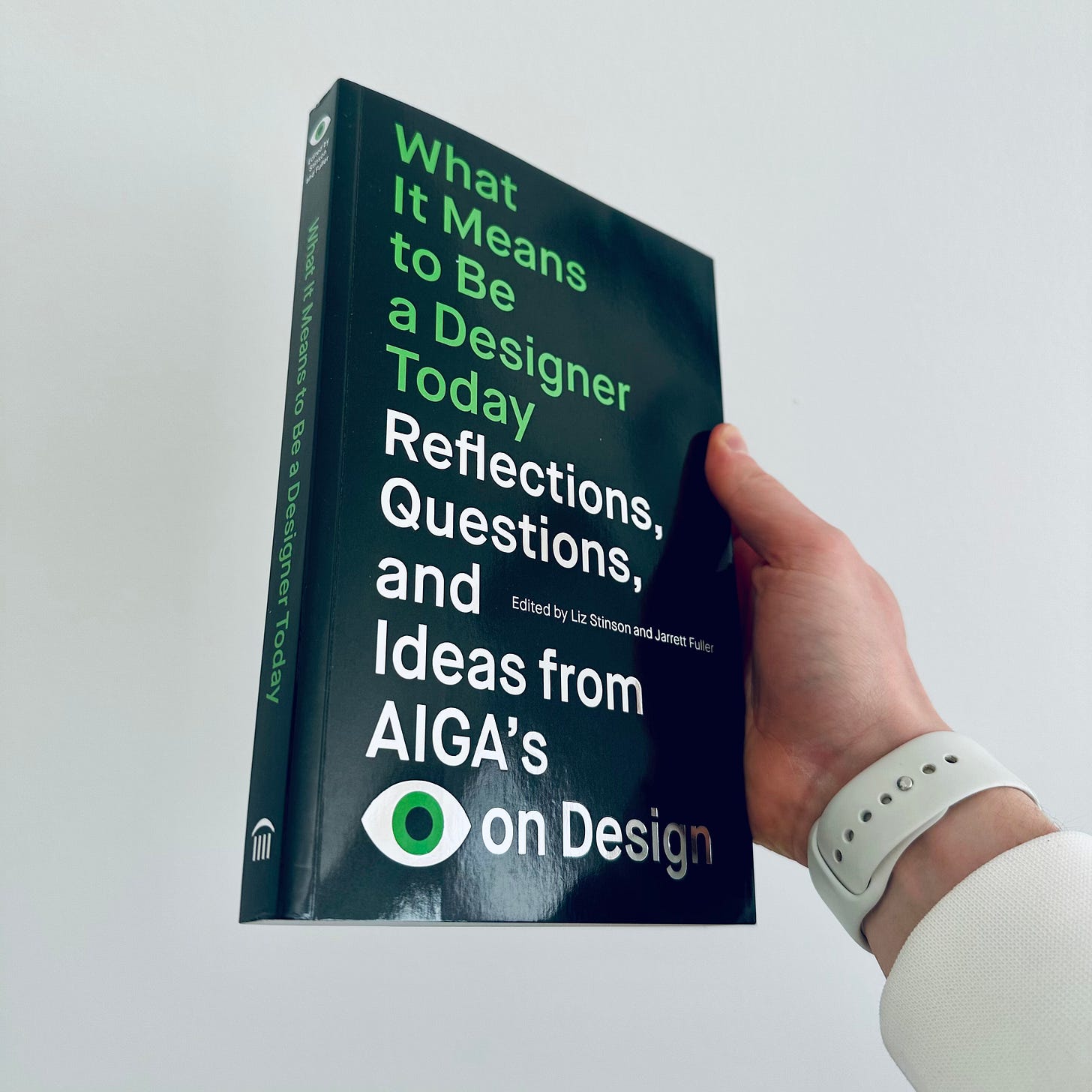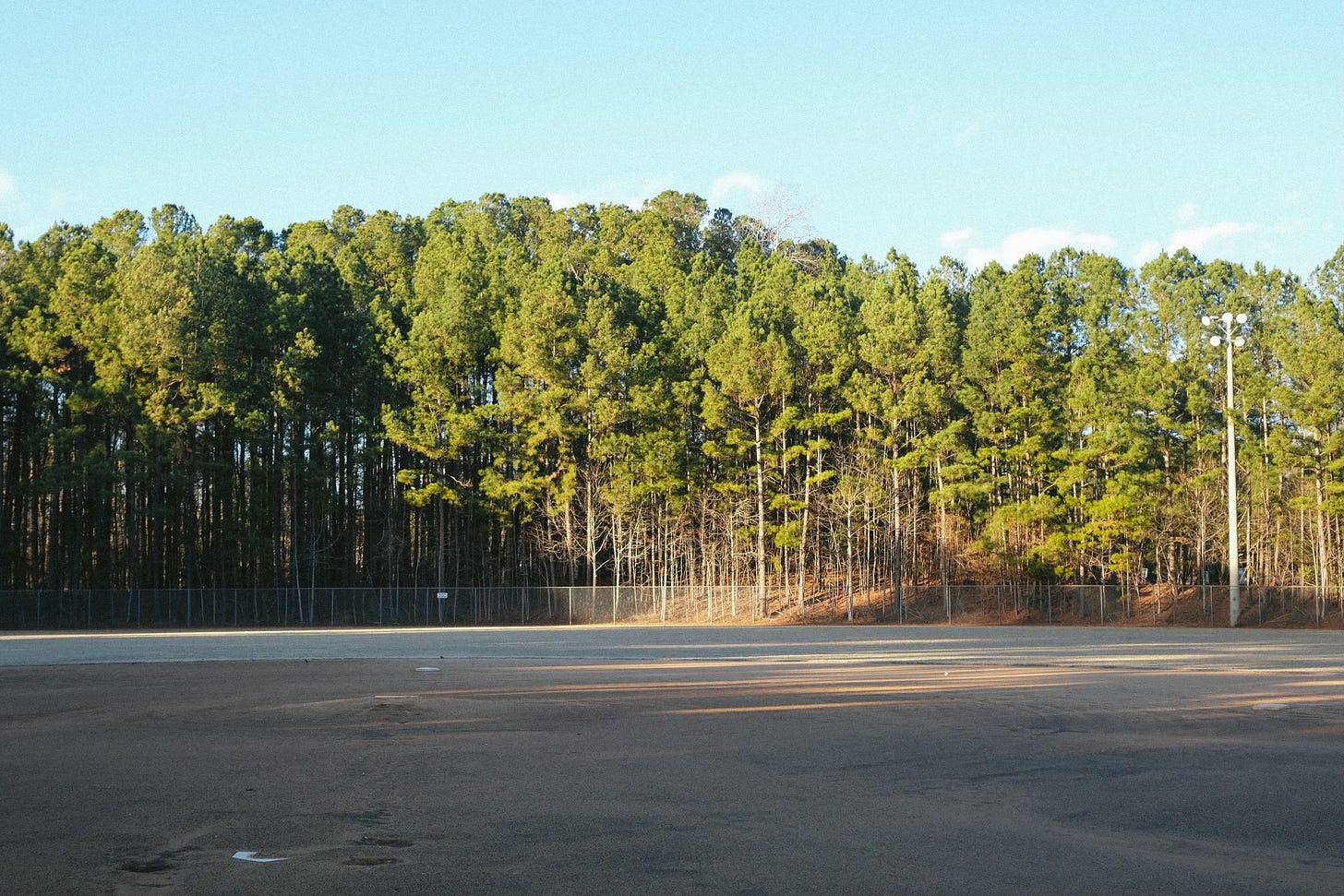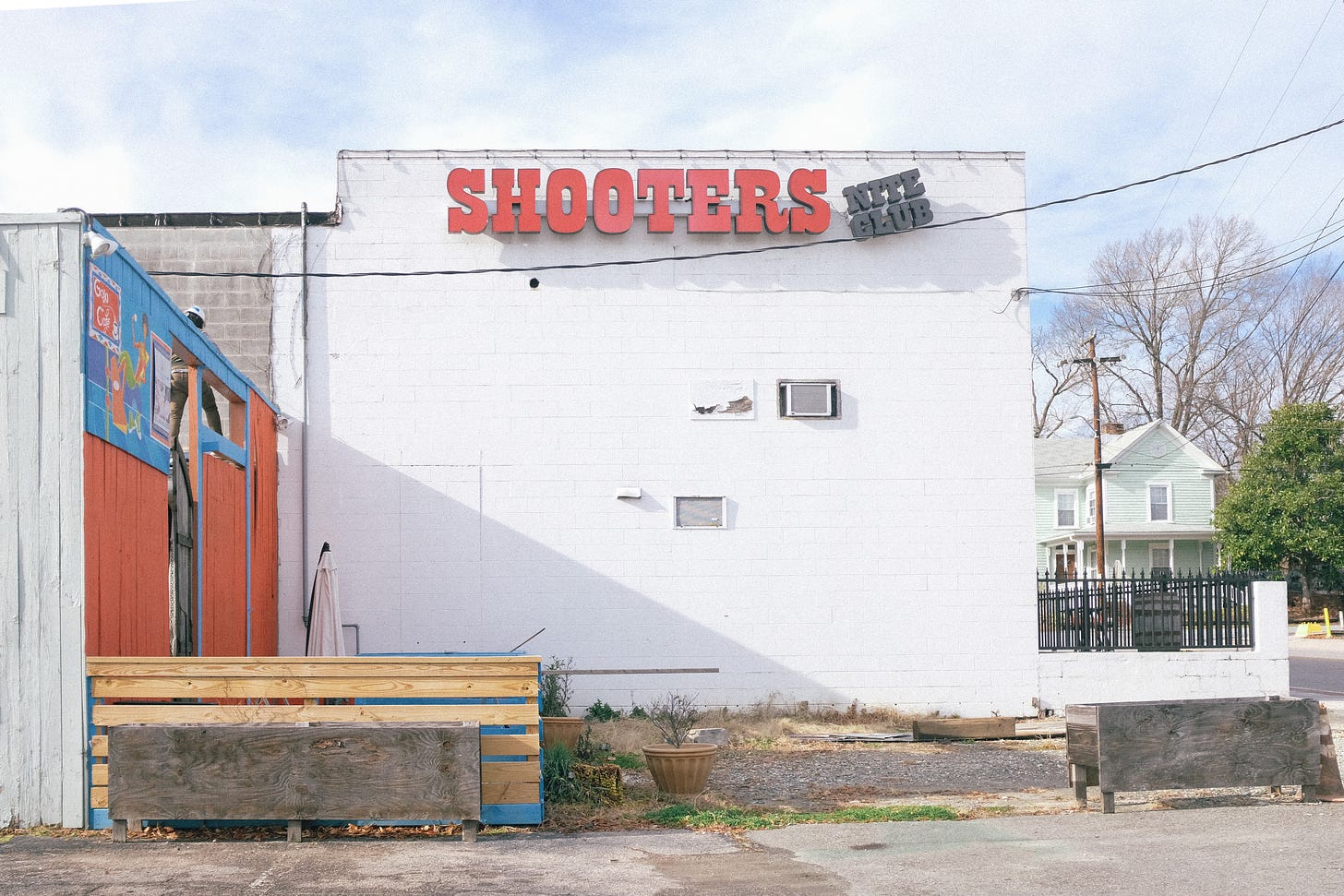33. What It Means To Be a Designer Today
I've got another book coming out!
I’m excited to announce that my next book, What It Means To Be A Designer Today: Reflections, Questions, and Ideas from AIGA’s Eye on Design is now available for preorder!
Co-edited with my colleague Liz Stinson, this book, coming from Princeton Architectural Press in April, collects both previously published essays for Eye on Design, where I served as contributing editor for two and half years, as well as new, original essays conversations that survey the state of contemporary graphic design.
Here’s the official blurb:
Eye on Design is an editorial platform from AIGA that has, for the last decade, covered the ins and outs of the design industry. From documenting bold new work from global designers to chronicling the field’s most critical issues, their reported stories, op-eds, interviews, and conversations help designers make sense of the world and place their profession within a broader context. Weaving together original and previously published content from some of the most important writers in today’s design conversation, this book for designers encapsulates wide-reaching topics that strive to answer an essential question: What does it mean to be a designer today?
The book is organized into three sections: reflections, questions, and ideas. In Reflections, we look at the history of design and how it’s been discussed to make sense of how we got here. Questions offers provocations and debates about the current state of the design industry and practice. Finally, Ideas offers a set of goals to imagine alternative forms of graphic design practice, both for today and into the future.
The book features contributions from a range of thinkers, designers, and writers including Rick Poynor, Anne Quito, Briar Levit, Cliff Kuang, Khoi Vinh, and more. I also have two essays in the book: we’re reprinting my 2021 essay on minimalism as well as an expanded and revised version of my 2020 essay on design criticism.
While working on the book, I kept thinking about it as the lost, latest volume of the seminal 1990s anthologies, Looking Closer. Those books, which collected the important writing on design of that era, continue to be a touchstone in my thinking of what design writing can do. My hope is that this new collection of writing can do something similar: capture the design zeitgeist at the moment, help us make sense of it, all while showcasing great writing from the important emerging design writers of our time.
A big thanks must also go to previous EoD editors Meg Miller, Madeline Morley, and Zac Petit, whose fingerprints are all over this book, and to Perrin Drumm, the founder of EoD, who wrote the foreword. Thanks to AIGA and Princeton Architectural Press for their support and guidance — I’m excited for this to be out in the world.
The book will be available wherever books are sold on April 2, 2024 but pre-orders are opened now. You can get more information and buy the book here.
While you are pre-ordering this one, I was just informed that my last book, Where Must Design Go Next? is almost completely sold out! THANK YOU! There are a few left on Amazon and my friends at Draw Down are selling some copies. I’m hoping we can do a reprint at some point but if you want a copy, get them while you still can.
Over on Scratching the Surface, I’ve had conversations with MIT’s head of architecture Nicholas de Monchaux about architecture as a mediated practice, publisher Freek Lomme about his publishing company Set Margins and infrastructure of design publishing, and designer Michael Cina about expanded practices and when the center of gravity in design discourse moved from printed publications to the internet.
And on the website, I interviewed LinYee Yuan about Field Meridians, the new non-profit that uses gardening as a lens to think about community building and food systems. I also published a new personal essay from Eric Heiman called No Design that feels like an important piece I’m definitely going to be assigning to my students.
More new episodes coming every other Wednesday. I have some coming up I’m very excited to share!
I finally read Chris Kraus’s classic epistolary novel I Love Dick. I remember hearing about this book ten years ago and wanting to read it immediately. I never did! New books kept jumping to the top of the pile. I even watched the short-lived Amazon series based on the book but never actually read it until now. I mostly liked it — I was taken by the first half much more than the last — but I found myself much more interested in its form.
I’ve been interested in the epistle as a form for the last few years. Perhaps because we live in a culture where everything can feel public — where all communication can feel like one to many, like shouting into a void — that the act of letter writing, of reading the correspondence between two people feels intimate in a newly-profound way. I think about Prem Krishnamurthy’s On Letters or Edmund de Waal’s Letters to Camondo which feel like they can do things within that structure they otherwise wouldn’t be able to do. Same with Marilynne Robinson’s Gilead. For an epistolary documentary, I recommend Mark Cousin’s The Eyes of Orson Welles. I attempted an essay in this structure a few years ago (never published) that reading I Love Dick made me want to return to and revise and publish.
What other epistolary books — novels or otherwise — should I read?
I haven’t read Kyle Chayka’s new book Filterworld yet but I’m going to. Kyle is a friend and I always appreciate his work. I really enjoyed his conversation with Ezra Klein on the book and the idea personal taste, with ideas from it lingering in my mind for the last month.
On the flip side, I appreciated this critique of the book from Kevin Munger:
Anxieties about “The Algorithm” reveal how our lives are already governed by systems we don’t understand and can’t control. We are living with technology moving at an inhuman speed, operating at scales simultaneously smaller than we can detect and larger than anyone can comprehend.
This inversion is a powerful analytical tool. Consider: anxieties about LLMs taking the place of humans primarily reveal how society has already made humans replaceable. Only human communication which has already become routinized and rationalized is at risk of being replaced—but unfortunately, that’s most of it.
This feels right to me. I’ve always been weary of the general usage of “the algorithm” to describe why something is the way it is or explain away something else, as if the algorithm is monolithic and uncontrollable. I see the same thing happening with the term “artificial intelligence” where it’s becoming a sort of hyperobject that means many different things to different people. I see this with students too, who will use “artificial intelligence” as a catch all to explain away anything in an app they don’t quite understand or don’t want to deal with (I’m reminded of L.M. Sacasas’s idea of “outsourcing virtue”). I’ve gone so far as to ban the term in a class, encouraging students to be specific about language and put in the work to understand what they are trying to do and why.
(Mungor’s Substack also turned me on to this book back flap biography of organizational theorist Stafford Beer, which is my new favorite biography.)
This interview with architect and artist Allan Wexler “on dining as interface” from Mold Magazine is great. There’s a lot in here on the intersection of the art worlds and the architecture worlds, conceptual practice, food as design, and, of course, teaching:
My background is architecture, in terms of education, but I prefer the loneliness of my studio. I tend to compromise too much if I’m collaborating with other people, so I chose not to follow a traditional architectural practice. I found that teaching allowed me to move out of the comfort and the privacy of my studio, into the world where I can actually have conversations with people. That’s kind of my alter ego. Teaching is a bit of a performance. It’s slightly theatrical, and I enjoy that.
Though I’ve had it bookmarked for a while, I finally got around to watching Mark Lee’s Walter Gropius Lecture at Harvard called Five Footnotes Toward an Architecture. It’s a thoughtful, dense, and highly theoretical look at the history and future of architecture. (Don’t miss Sarah Whiting’s delightful introduction!)
I’ve been following the attacks on higher education fairly closely and found a lot to like in this thoughtful essay in The New York Times Magazine from Stephen Carter and Caitlin Flanagan’s Atlantic essay on how colleges are lying to their students.
They say that emo is about to make a comeback and I am here for it. I’ve had Claire Rousay’s new single, Head, which I’ve heard described as “ambient emo”, on repeat a lot this week. On the other side: Paramore covering Talking Heads? Yes please!
I read a bunch of Annie Baker’s plays last year so I was over the moon to learn that she has written and directed her first feature film, Janet Planet, coming later this year from A24. I cannot wait!
I’ve only lived in the south for three years and I’ve already grown accustomed to the mild winters: below 50° and I’m bundled in gloves and hats and scarves. I’m itching for the warmer weather, ready to begin prepping the garden for the summer. Until then, I’ve been spending time with Derek Jarman’s Gardens.
Thanks, as always, for reading. See you next month,
JF






Thanks for sharing that critique from Kevin, very interesting. It is very tempting to think many problems can be blamed on algorithms and thus can be solved by regulating / changing them. While thats a good idea , I'm afraid that's not going to solve everything.